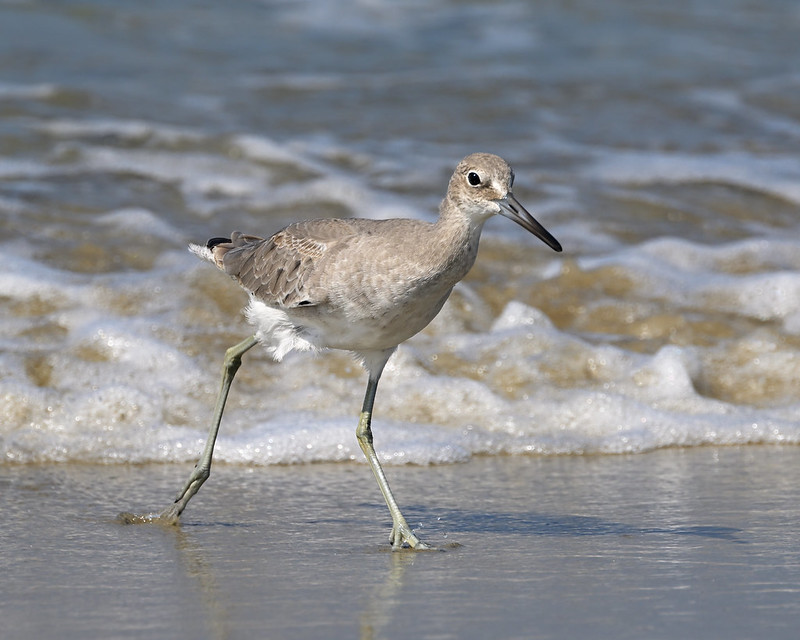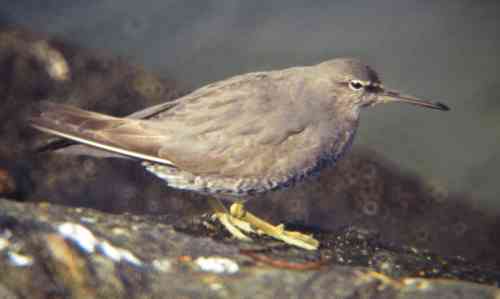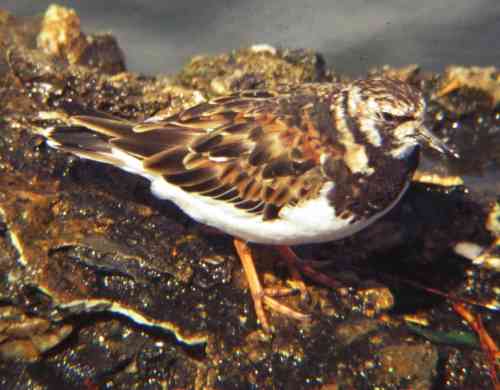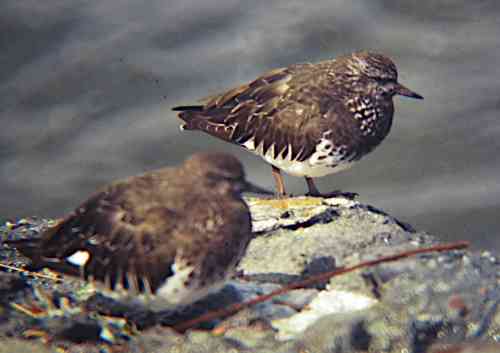Friday Night Photos Shore Bird Edition
Submitted by Socialprogressive on Fri, 10/20/2023 - 5:00pm

Happy Friday everyone. I hope everybody is doing well. Post any photos, memes, or music you like.
It's been a slow week. Most of it spent unwinding and decompressing from having family here last week. The weather has been great most of the week although it was hot yesterday(90s) and will be again today and rain is in the forecast for Monday.
I don't drink milk so I can't say what the price is for a gallon, but I do put gas in the car and the price for a gallon of regular has been holding steady at $5.50 +/- a few pennies the last two weeks.
Between lakes, reservoirs, rivers, streams and 60 miles of coast line, San Diego county has lots of places to find shore birds. These are some that I've seen in the last few weeks.










Comments
Good evening social, thanks for the pictures and the open
thread. I am at a loss as to how you were able to discern the eye color of that darner. The legs on those willets, a key identification mark, really show up extremely well in those shots.
Be well and have a good one
That, in its essence, is fascism--ownership of government by an individual, by a group, or by any other controlling private power. -- Franklin D. Roosevelt --
Hi, EL
The Willet was a first for me. I'd never seen one before. As for the dragonfly, when I enlarged the image, it's coloring appear to be those of a Blue-eyed Darner, but I could be wrong.
I'm great at multi-tasking. I can waste time, be unproductive, and procrastinate all at the same time.
Hey SP
I would call that a Blue-eyed Darner SP. There are a few similar in that group, which is called Mosaic Darners, after the pattern on the abdomen. But that looks a Blue-eyed to me, and that is the most common of that group in coastal socal.
We cannot solve our problems with the same thinking we used when we created them.
Look deep into nature, and then you will understand everything better.
both - Albert Einstein
Thanks, dystopian
The only other blue dragonflies I've seen at Santee Lakes are the Western Pondhawk and I know the one in tonights image is not a Pondhawk.
I'm great at multi-tasking. I can waste time, be unproductive, and procrastinate all at the same time.
Hi Social
Thank you for posting and hosting, it's always appreciated.
I enjoy watching shorebirds. They move with stealth and gracefulness. The variety of egrets and herons, plus spoonbills and anhingas I saw while visiting my mom were a special treat.
I hope your family didn't put too much pressure on ; ).
Hi, Janis
I'd love to see Anhingas and Spoonbills. They don't reside in Socal but maybe one day I will be able to get to the east coast and get a chance to see them. Thanks for the Toots tune. That along with a little ganga does wonders.
I'm great at multi-tasking. I can waste time, be unproductive, and procrastinate all at the same time.
With your love of birds,
I wish you could see them.
That's one way of coping or enjoying the family ; ).
A few photos from the Maritime Museum in Auckland
Marshall Islands Stick Chart
When I first saw this piece and read the title, I thought 'stick charts’ must represent star navigational charts - but no - navigational all right, but something different. "The charts represented major ocean swell patterns and the ways the islands disrupted those patterns, typically determined by sensing disruptions in ocean swells by islanders during sea navigation.[1]"
https://en.wikipedia.org/wiki/Marshall_Islands_stick_chart#Kaelib_swells
Hinemoana is a Maori waka docked alongside the museum, on the harbour. Those are solar panels on the roof over the inflated boat.
A beautiful Maori carving from the stern of a waka, and Maori weaving on the wall.
Partial shot of a very large outrigger canoe from Kiribati … Te Baurua
The “Baurua,” is the king of the outrigger canoes built up to 100 ft. long, with 2 to 3 sails. It was used for distant voyaging and war during the old days. A fine specimen of the “Baurua,” probably the last of it’s kind to exist today called the ‘Taratai,’ now sits at the National Maritime Museum in Auckland NZ.
The ‘Taratai Baurua,’ 76ft long was built in the 1970s at the Taratai Village in North Tarawa built for James Siers who wanted to test that the Ikiribati islanders were capable of making great ocean voyages by canoe. The 76ft, double-ended outrigger was built without nails or screws, instead was lashed together with sennit (string made from coconut fibre) which made a 482 kilometre (300 miles) trip from Tarawa to Fiji. Oral history since the 1200s praised IKiribati as great navigators having to sail the Baurua between Futuna, Fiji, Tuvalu, Tonga Samoa and Kiribati which is 2,300 kilometres across the Pacific Ocean.
https://visitkiribati.travel/blog/te-wa-the-kiribati-canoe/
And one last photo from my natural environment
Enjoy your weekend and be well all
Thanks for a trip to the maritime museum, Janis
The stick chart shows that from our earliest days we have been recording the world around us to help improve our lives. Love your green natural environment. Things are rather brown around here right now.
I'm great at multi-tasking. I can waste time, be unproductive, and procrastinate all at the same time.
Hi Janis!
Great pics Janis!
I wonder what type of wood they used to carve that tailpiece? Great sailing 'machines'. Your natural environment looks wonderful too! I never saw moss I didn't like.
take care!
We cannot solve our problems with the same thinking we used when we created them.
Look deep into nature, and then you will understand everything better.
both - Albert Einstein
Hi, and thanks dystopian
The sternpost is most likely carved from Totara ...
https://nzetc.victoria.ac.nz/tm/scholarly/tei-CowYest-t1-body-d1-d12.htm....
https://www.nzpcn.org.nz/flora/species/podocarpus-totara-var-totara/
"I never saw a moss I didn't like". I don't think I have either.
All the best to you
Hi pixelators
Hi all, Hey SP!
Great photos as always!
When I hear someone say 'Willet' I often answer, 'it might, we'll have to watch it and see'.
Just to clarify terminology a bit ... I note you separated the shore and the bird in title, as shore birds. Properly speaking, possibly confusing since there is a group of birds called shorebirds, aka sandpipers. And they are not all shorebirds, just birds at the shore. In the old world they are called waders. Just to elucidate...
Most shorebirds are in the family Charadriidae, but a few familes make up the whole group of birds that includes everything from curlews and godwits, to phalaropes, plovers, oystercatchers, avocets and stilts, turnstones, tattlers, snipe, woodcocks, and lots of things with names ending in 'sandpiper'. These are all in any book with'shorebirds' in title. The bible is Shorebirds by Marchant and Prater, 1986, every sps. in the world. Plates are awesome, text brilliant.
In contrast, none of the herons, egrets, storks, spoonbills, ibis, flamingoes and bitterns would be in a shorebirds book. They are not closely related to shorebirds and most are in the family Ardeidae, though a few other families for the outliers like ibis and flamingoes. Collectively this group is often called wading birds, or, it might have been good old Roger Tory Petersen himself that coined the most popular name for this group, 'long-legged waders'. They are not actually 'shorebirds', though you often find them along the shore. In general much larger birds than shorebirds, mostly with fish-stabbing bills.
So with apologies, just didn't want people thinking herons or egrets are shorebirds.
As for the large-breasted species you captured, I would ask if you could acquire some frames of say a Large-breasted Nut-scratcher, or perhaps a Red-bottomed Bed-Thrasher? Please do post if you do. I'd settle for a Long-legged Honker.
I'd settle for a Long-legged Honker.
I mentioned before about birders often grouping shorebirds into similar types, often by habitat. As in there are some commonly called grasspipers, and others that are rockpipers. Shorebirds, or sandpipers, that you see in grass, or on rocks. Most types are more mud or sand probers.
Here are a couple rockpiper pics, slide conversions so a big degenerate, but not as much as the photog.
Wandering Tattler

Ruddy Turnstone

Black Turnstone

Someday I'll find some Surfbird and Oystercatcher pics, two other 'rockpipers'.
Have good ones all!
We cannot solve our problems with the same thinking we used when we created them.
Look deep into nature, and then you will understand everything better.
both - Albert Einstein
Thanks for the clarification dystopian - Waders
I wondered if calling the egrets, herons, etc. Shorebirds, having watched them along grassy canals rather than on the beach shore, was inaccurate.
Thank you also for the photos of the rockpipers. I mostly see Oystercatchers congregated on the sands of the bay, but close to the shallow reefs.
@janis b Hi Janis,
Hi Janis,
I'd say when used as two words as shore birds, it definitely does not mean what shorebirds does, which is a specific set of birds. We see ducks and gulls along the shores, and yet typically they are not called shorebirds. All are birds that may be found along the shore, but not all are shorebirds, which are the sandpipers. However to avoid confusion it might be better to say birds of the shore, or along the shore. Then no one could think herons or egrets are shorebirds.
And yes, there are two types of oystercatchers, some are sand probers, others are rockpipers. All the rockpipers are exploiting the tidal 'surf zone' and often roost and rest at high tide, feeding out in the stuff on the rocks at low tide. In the U.S. the eastern American Oystercatcher is a sandprober, the western Black Oystercatcher strictly on rocks. Sorta seems to me the all black types are rockpipers and the black and white pied ones are sand probers.
Wow, interesting on the Podocarpus, had no idea about its wood usage... a southern hemisphere genus of trees, only introduced in northern hemisphere. Usually teak and mahogany are used on boats due to their dense and oily content, making them good for humidity and water exposure. This must have that.
Thanks!
We cannot solve our problems with the same thinking we used when we created them.
Look deep into nature, and then you will understand everything better.
both - Albert Einstein
Hi dystopian
Why does everything make sense in nature, but get lost in humanity.
I’m glad we get to share the images and interesting features of a variety of species and habitat.
About the Totara tree -
Enjoy
thank you Janis!
thanks for that J!
/eom
We cannot solve our problems with the same thinking we used when we created them.
Look deep into nature, and then you will understand everything better.
both - Albert Einstein
@dystopian @dystopian How would you
How would you technically classify birds like albatross, and pelicans?
Inner and Outer Space: the Final Frontiers.
Islanders were/are master and
fascinating boatmakers and sailors. Of course, survival would require it. Beautiful boat and bird pics. As a water nut of the first order, I've always been a big reader of boating, swimming, sailing, fishing, and mother ocean in general. Storm season is slowly winding down in my area of the world. There's a 'baby' hurricane named Tammy down in the tropics, but she poses no threat to the Sandbar Peninsula.
Rec'd!!
Inner and Outer Space: the Final Frontiers.
Hey OBF!
Hi OBF. Pelicans and Albatross are seabirds. They are in the books titled 'Seabirds'. There are true seabirds, which are generally pelagic species living their lives at sea, except when coming to land to breed. Then there are birds which live in marine environments, so seabirds in general terms, but they typically roost on shore every day or night, and not only in nesting season. Like Pelicans or cormorants.
The albatrosses are in a group called tubenoses, which includes albatross, shearwaters, petrels, storm-petrels, and Fulmars. They have tubes on top of bill they expel salt through (as well as a fetid fish oil to discourage predators if need be). These are true seabirds that only come to land to breed, what is known as pelagic species. Pelagic means 'of the sea' or 'of the open ocean'. Birding trips to see seabirds are called Pelagic trips. Pelicans and Flamingoes are littoral, like gulls. That is they live in the shore areas. Pelicans and Boobies are in the same family incidently.
So there are specific groups of birds that are called seabirds and shorebirds. Then there are birds which you may see at sea or shore, which are not seabirds or shorebirds technically, only in the loose general sense. Birds of the sea, or shore. I guess if no one is around that knows anything about it, it doesn't matter which you use how. But a birder might try to clarify things... or they could just confuse them.
But a birder might try to clarify things... or they could just confuse them.
Thanks for your interest.
We cannot solve our problems with the same thinking we used when we created them.
Look deep into nature, and then you will understand everything better.
both - Albert Einstein
You have a knack
for sorting out the confusion, while providing further knowledge to be confused by. Good you're good at it ; ).
The classification, Seabirds make more sense than ever now, with your clarification. They are not just any bird you see at the seaside, but they spend most of their life at sea. They deserve to be unique and have the honour of being called a seabird.
Thank you
Classic children’s book “Seabird” by Holling Clancy Holling
https://yandex.com/search/?text=seabird+holling+clancy+holling
Both beautiful and informative.
The same author-illustrator also did a wonderful book about the life of a hermit crab.
Hi, dystopian
Thanks for all the info and images. I've seen the Black Turnstone before but not the Ruddy Turnstone or Wandering Tattler. Since they're found on the west coast I'll have to keep an eye out for them.
I'm great at multi-tasking. I can waste time, be unproductive, and procrastinate all at the same time.
rockpiper hunting
Hi SP!
Rocks is where. Usually where one is, they all are. Black and Ruddy Turnstone, Wandering Tattler, Surfbird, and Black Oystercatcher. Often they are all seen together in mixed flocks. I remember about 1980 or so when 4 Black Oystercatchers showed up on Pt. Loma, they were very rare in the county then and we made special effort to see them for our S.D.Co. lists. They are much more common now. La Jolla Cove area might be good for rockpipers. Most of the rocks on the Pt. Loma are hard to view without a telescope. Best to find rocks with kelp, barnacles and mussels or simlar on them. They are also often on any jetty or breakwater. Currently, until spring, stuff will be in duller winter plumage, but a Surfbird or especially a Ruddy Turnstone in April when in breeding plumage, are stunning.
We cannot solve our problems with the same thinking we used when we created them.
Look deep into nature, and then you will understand everything better.
both - Albert Einstein